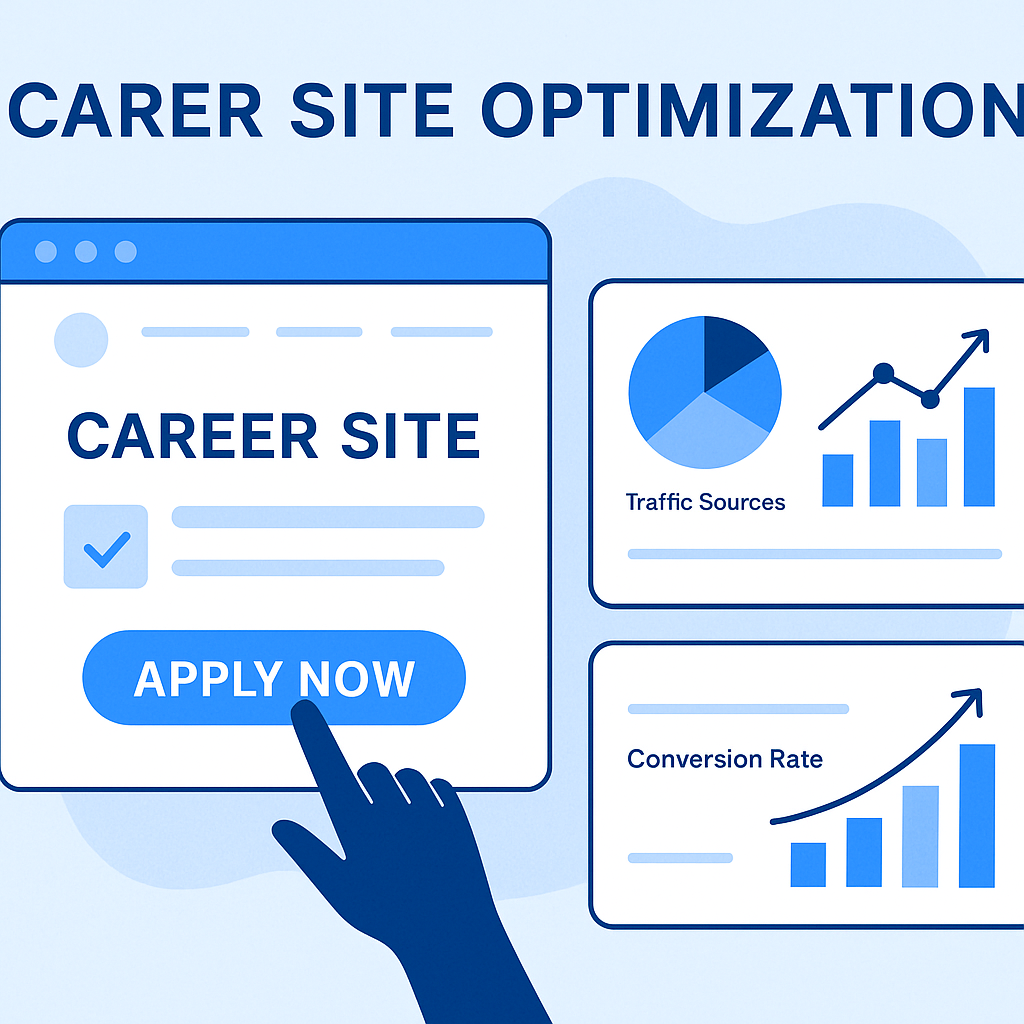Career Site Optimization: Turning Your Careers Page Into a Recruiting Powerhouse
What Is Career Site Optimization?
Career site optimization is the process of improving the design, content, structure, and technical performance of your organization's careers page to maximize candidate engagement, SEO visibility, and conversion to application.
It’s where employer branding, digital marketing, and recruiting intersect. Just like a product page sells a product, your careers site should “sell” your culture, mission, and jobs—convincingly and efficiently.
Related: Discover how Employee Experience starts before day one—through every pixel and paragraph on your career page.
Why Career Site Optimization Matters
Modern candidates behave like consumers. They explore options, compare experiences, and decide who’s worth applying to based on first impressions—often made via your careers page.
A poor or outdated site can lead to:
High drop-off rates before the application
Fewer qualified applicants
Negative perception of company culture
SEO invisibility (no organic traffic = no applicants)
On the flip side, a well-optimized careers site can:
Attract passive candidates through search engines
Increase conversion rates from visit to apply
Reduce cost-per-application (CPA)
Reinforce your employer value proposition (EVP)
Related: Pair with a robust Applicant Tracking System (ATS) to ensure seamless application flow.

Key Pillars of Career Site Optimization
1. SEO-Driven Structure
Use job-title-rich URLs (e.g.,
/careers/senior-product-manager)Optimize meta tags, headers, and schema for job listings
Submit job pages to Google for Jobs via structured data
2. Mobile Optimization
Ensure responsive design and fast page load time
Simplify application forms for mobile users
Enable resume upload from cloud storage
3. Candidate-Centric UX
Clear navigation to departments, locations, and job categories
Filter/search options for easy job discovery
Integrated chatbot or FAQ to answer basic questions
4. Compelling Employer Branding Content
Videos and testimonials from employees
Company values, DEI statements, and benefits highlights
Day-in-the-life stories, team culture breakdowns
5. Conversion Optimization
Minimize steps in the application process
Use “Quick Apply” or LinkedIn one-click options
Offer email alerts for future jobs
Common Mistakes to Avoid
Treating the career site as “just another webpage”
Copy-pasting corporate tone without candidate appeal
Using PDFs for job descriptions (bad for SEO and mobile)
Forcing account creation before job application
Neglecting analytics—if you can’t measure, you can’t optimize
How to Measure Optimization Success
Use these KPIs to evaluate your site's performance:
Metric | Why It Matters |
|---|---|
Bounce Rate | Indicates poor UX or content misalignment |
Time on Page | Measures engagement with your EVP |
Apply Rate | Shows conversion effectiveness |
Traffic Sources | Helps prioritize SEO vs paid vs referral sources |
Mobile vs Desktop Ratio | Reveals optimization gaps |
❓FAQ
Q: How often should I update my careers site?
A: Refresh content quarterly. Job listings should be real-time synced with your ATS. Branding elements annually.
Q: Should I use a subdomain or a main site folder for jobs?
A: Folders (e.g., company.com/careers) are generally better for SEO authority than subdomains (careers.company.com).
Q: Is video really necessary?
A: While not mandatory, short-form employee videos often increase apply rates and enhance authenticity.
Final Thoughts
Your careers site isn’t just an HR asset—it’s a digital storefront for your culture.
Optimizing it is no longer optional. It’s a strategic necessity for any organization serious about attracting top talent in a competitive market.
From structured content and smart SEO to real candidate stories and fast mobile UX—career site optimization is where recruiting excellence begins.
HR Glossary: Master the Language of Modern HR
From recruiting candidates to onboarding new team members, MokaHR gives your company everything you need to be great at hiring.
Subscribe for more information

